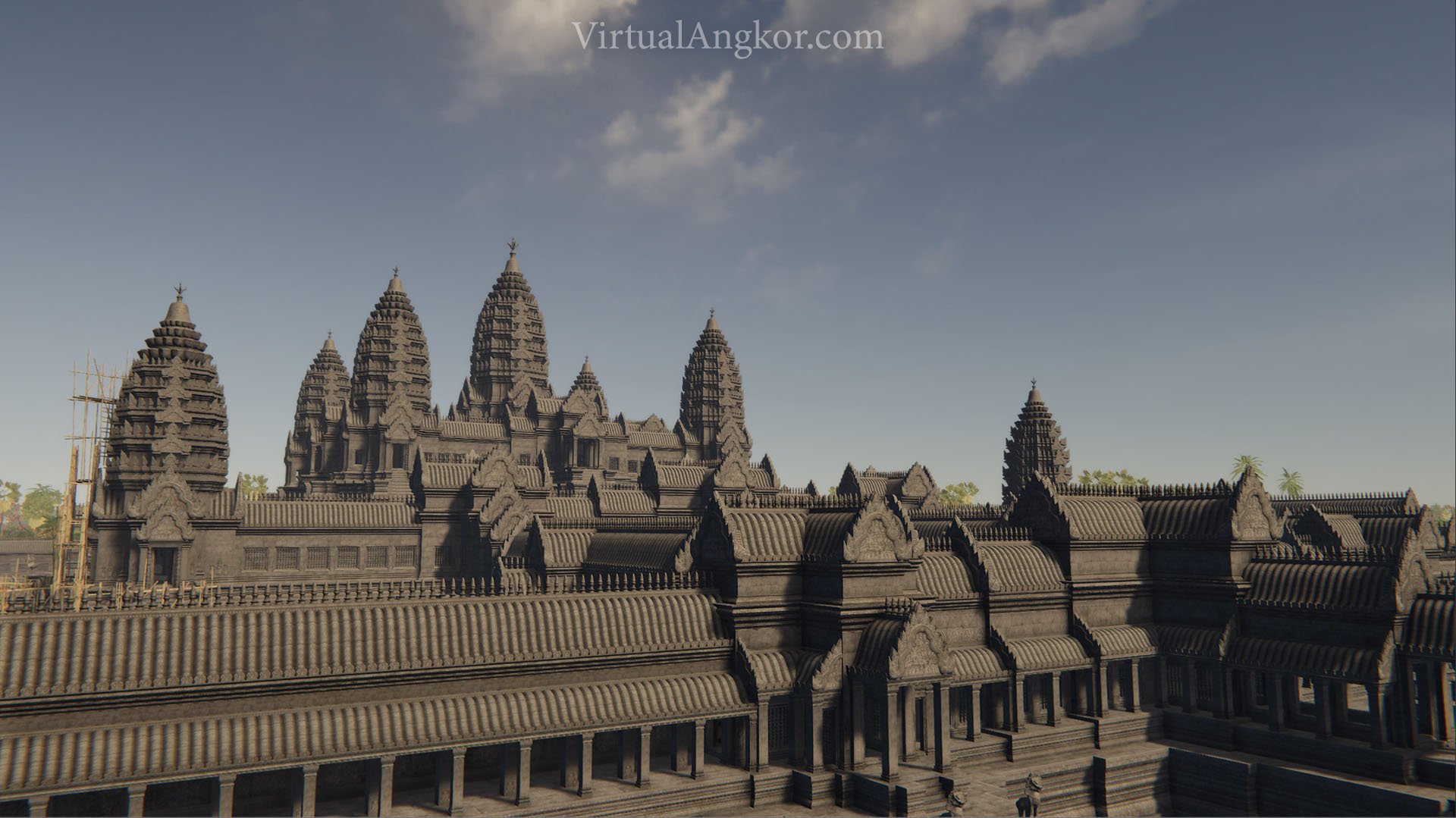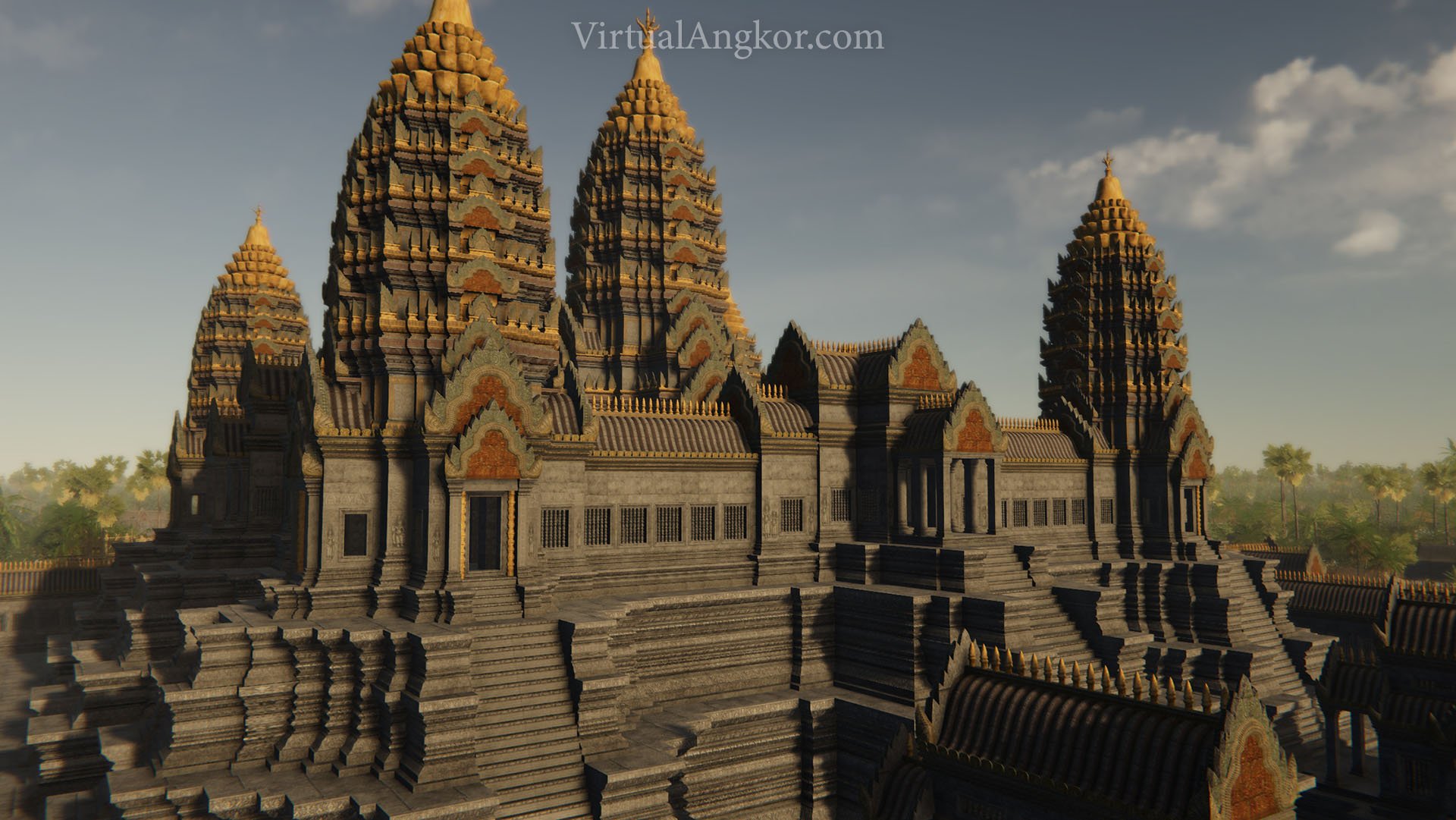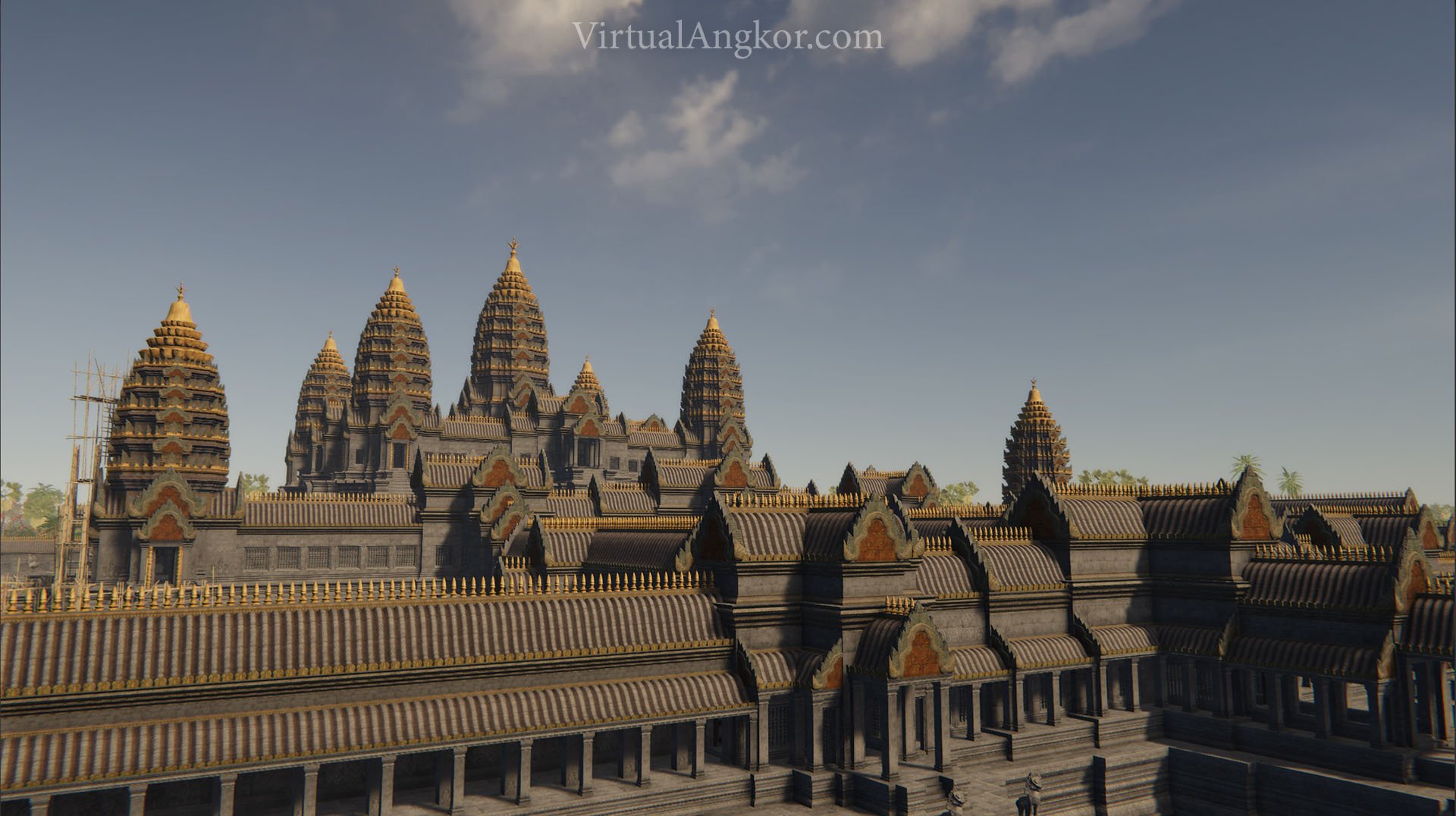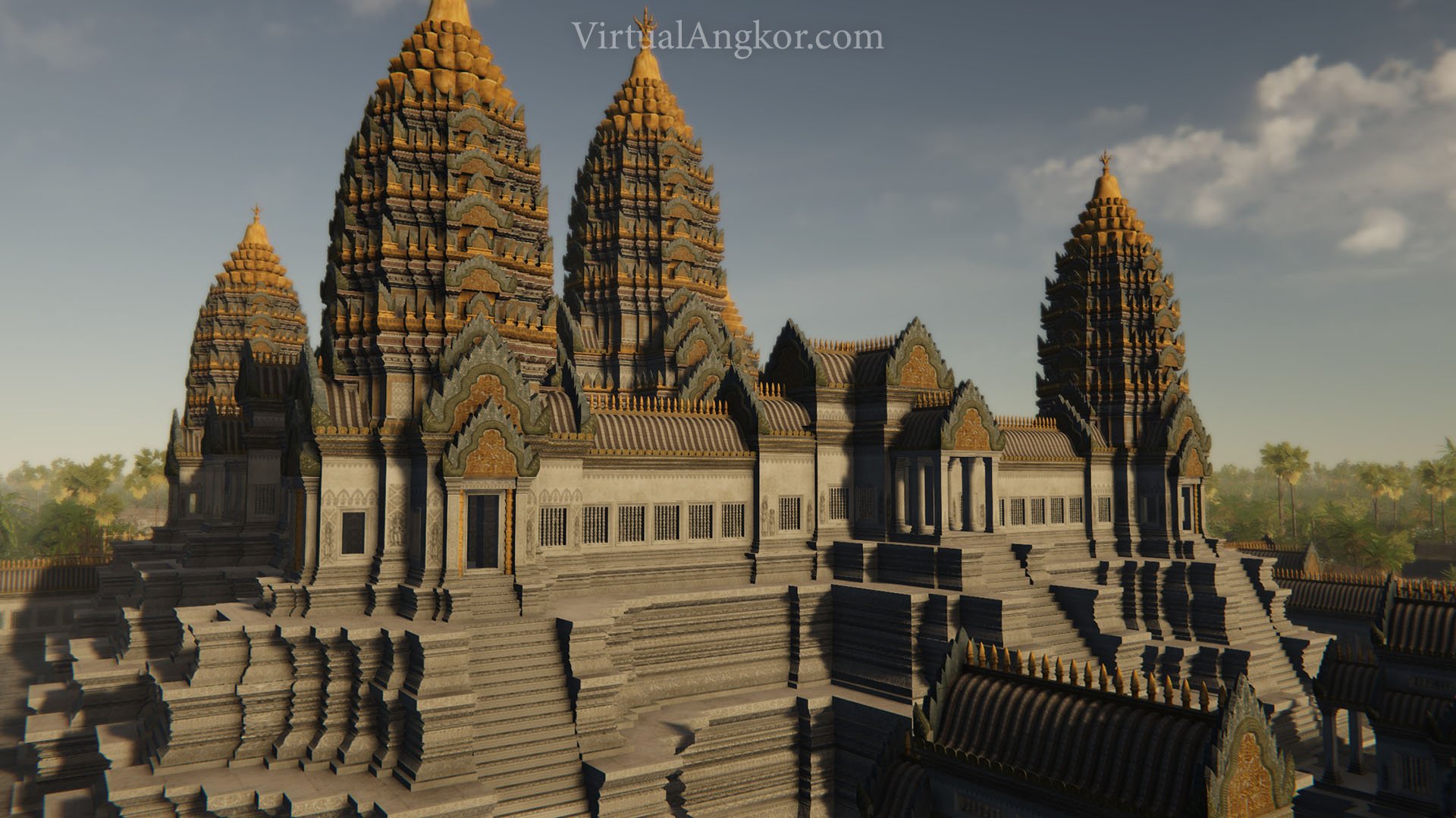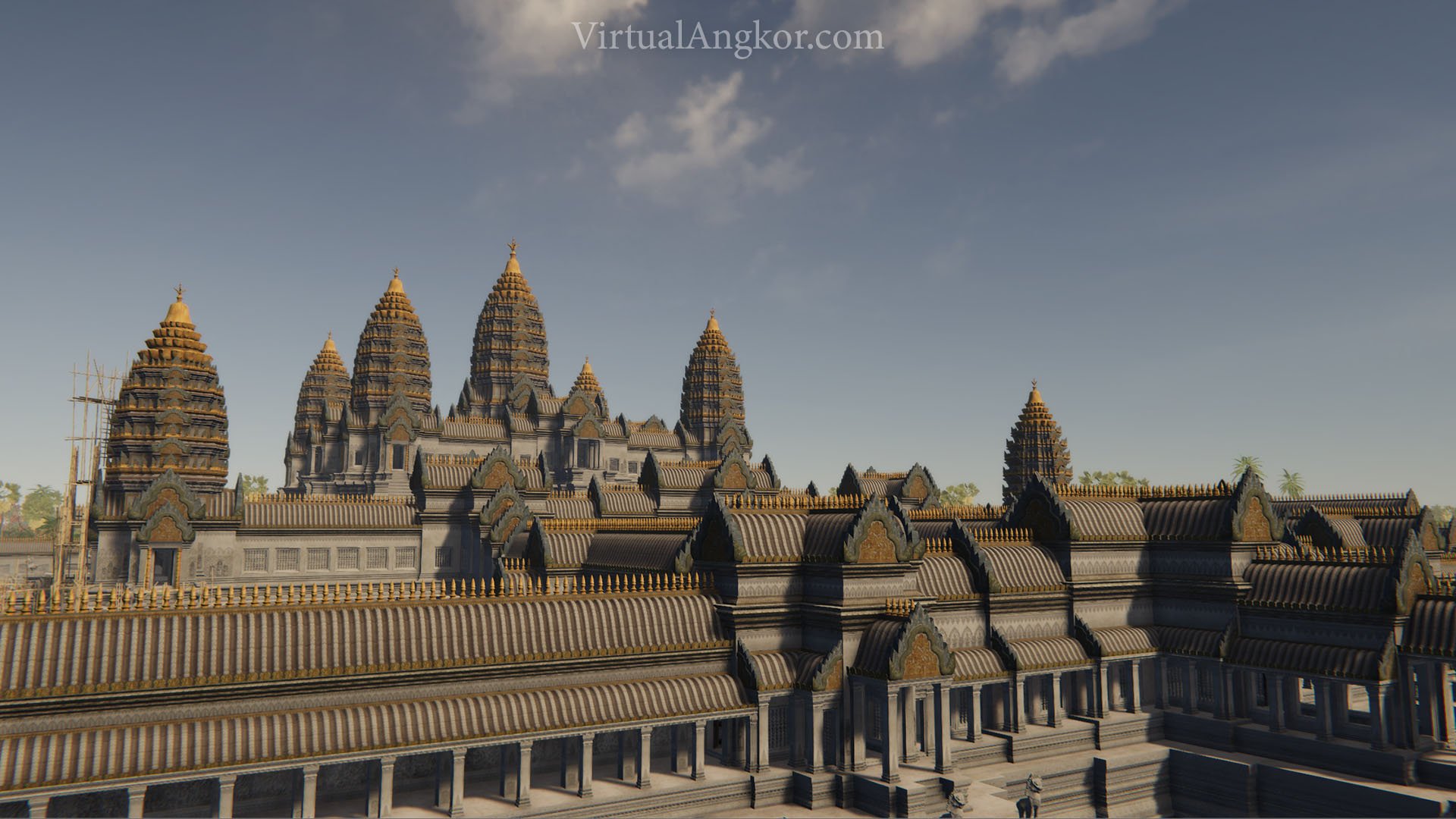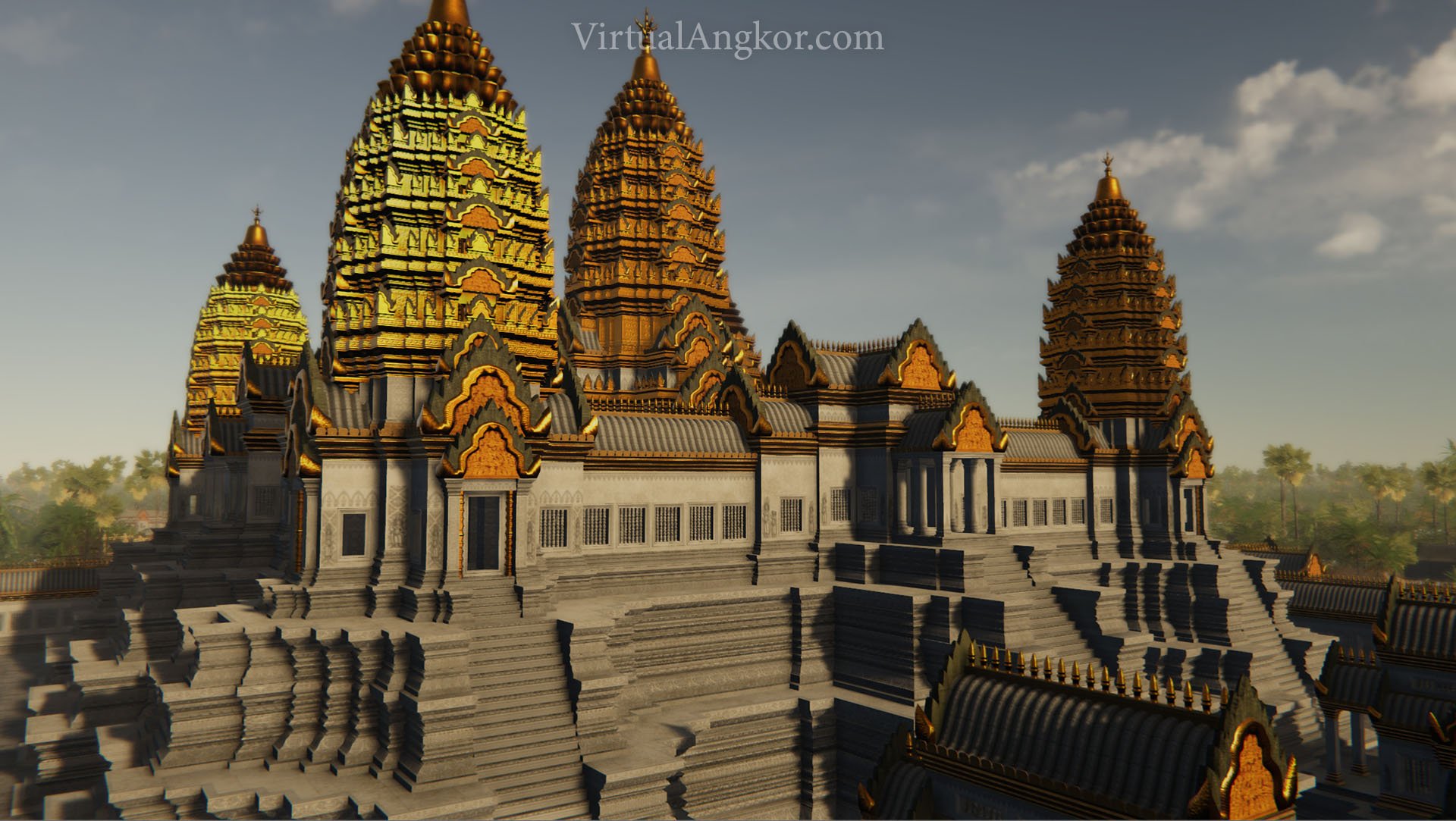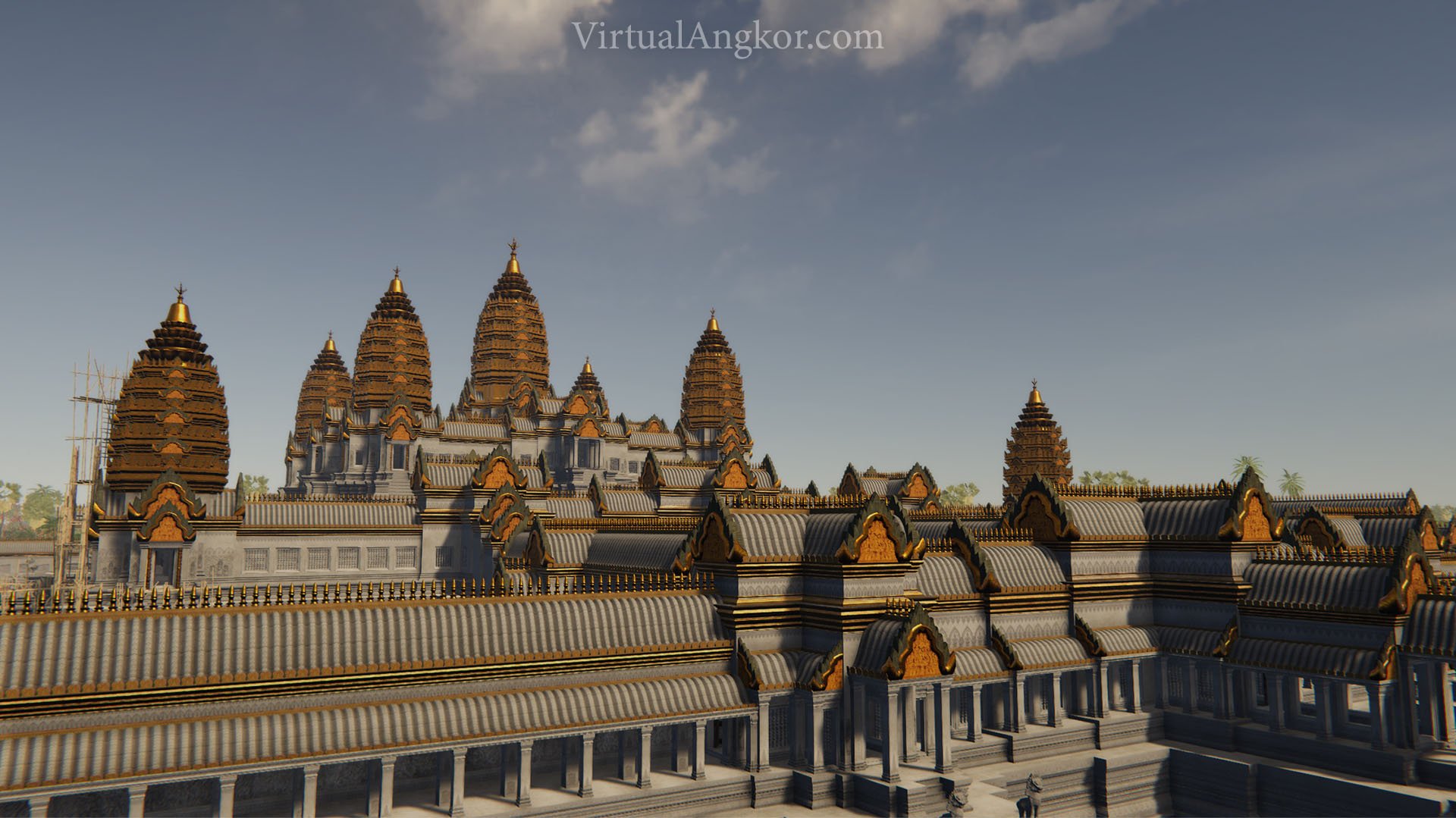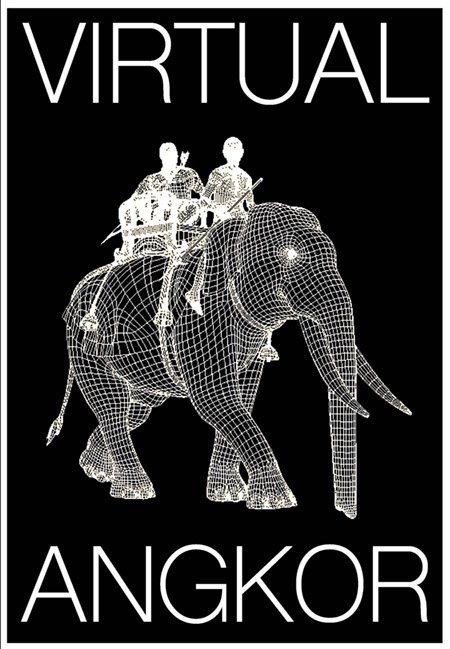Theme Two: Colour and History
In their current form, the temples of Angkor are largely monochrome monuments of grey, broken up only by splashes of green as nature encroaches upon the ancient city. In the thirteenth century, however, things looked very different as the city was dominated by brightly coloured, elaborately decorated temples that spread out across the landscape. Examine the image gallery, excerpts from Zhou Daguan’s A Record of Cambodia and the article below then answer the following questions.
Readings
Excerpts from Zhou Daguan, A Record of Cambodia: The Land and Its People
1. The City and Its Walls
In the center of the capital is a gold tower, flanked by twenty or so stone towers and a hundred or so stone chambers. To the east of it is a golden bridge flanked by two gold lion, one on the left and one on the right. Eight gold Buddhas are laid out in a row at the lowest stone chambers.
About a li north of the gold tower there is a bronze tower. It is even taller than the gold tower, and an exquisite sight. At the foot there are, again, several dozen stone chambers.
About one li north further again there is the residence of the King. There is another gold tower in his sleeping quarters.
I suppose all this explains why from the start there have been merchant seamen who speak glowingly about rich, noble Cambodia.
Ten li east of the city wall lies the East Lake. It is about a hundred li in circumference. In the middle of it there is a stone tower with stone chambers. In the middle of the tower is a bronze reclining Buddha with water flowing constant from its navel.
Five li to the north of the city lies the North Lake. In the middle of it is a gold tower, square in shape with several dozen stone chambers. A gold lion, a gold Buddha, a bronze elephant, a bronze cow, and a bronze horse—these are all there.”
2. Residences
The tiles of the main building are made of lead; all the other tiles are made of yellow clay. The beams and pillars are huge, and are all carved and painted with images of the Buddha.
In the place of doing official business there is a gold window, with rectangular pillars to the left and right of the crosspieces. About forty or fifty mirrors are arrayed on either side of the upper part of the window; the lower part is made of figures of elephants.”
Questions
Take a look at the colour schemes of the temples below, what do you notice? Are there particular colours that seem to recur? Why do you think they recur?
Based on your reading of the sources above, what do you think was the role of colour in Angkor? How is it being interpreted by an outsider like Zhou Daguan?
Think about the relationship between power, colour and religion. What other examples can you think of that reflect this connection?
Examine the images below or click through to the next part of the module.

